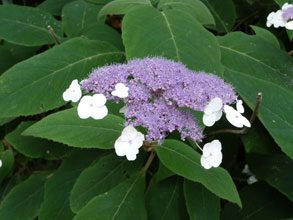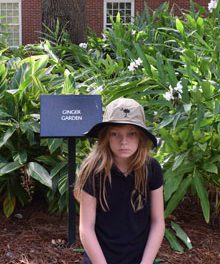 This is the time for planting shrubs and trees in the landscape. A little planning will help a lot. You should know the site requirements for the selections you are using, and that includes the size and shape of the plants at maturity and the spacing between them. Site requirements include soil pH, moisture, light and drainage.
This is the time for planting shrubs and trees in the landscape. A little planning will help a lot. You should know the site requirements for the selections you are using, and that includes the size and shape of the plants at maturity and the spacing between them. Site requirements include soil pH, moisture, light and drainage.
The most important design consideration is form, and fortunately nurseries offer shrubs and trees in all shapes and sizes. If a tree is going to get 30 feet tall and 8 feet wide you don’t want to plant it too close to the foundation of the house or shade out lawn. For example, there are camellias that have upright, rounded, or spreading forms. There are also early, mid-season, and late bloomers. Lastly the flowers can be white, red pink, or yellow, small, medium, and large. Camellia sasanqua blooms throughout the fall, has smaller leaves, sometimes fragrant flowers and tolerates more sun than C. japonica.
Prepare the soil at planting time. Our poor soils will benefit from the addition of organic matter. I like to mix compost into the soil to improve its condition or structure. After choosing the site, dig a hole twice as wide as the root spread of your shrub or tree (a 10” pot would have a 20” wide hole). Remove any of the soil from around the top 2 inches of the container and discard it. It will often have weed seeds in it and may obscure the swelling at the base of the trunk. The hole should be dug no deeper than the depth of that root ball. If a deeper hole is dug and backfilled, settling will occur, and the plant roots will not get enough oxygen. This is especially important with a heavy root ball or tree which was “balled and burlapped.” Remove any circling roots, cutting vertically with a serrated knife or sharp clean hand pruners. Also remove any ropes, wires, straps or burlap from larger material. Cutting the roots will improve new fibrous root production. Mix native soil and compost well before backfilling, water to fill the hole, set the plant in the middle, backfill soil and tamp around the plant with the shovel handle to remove air pockets. Water again and inspect to see that the root flare or swelling is above grade. It is not important to fertilize newly planted trees and shrubs, but a soil test will recommend the type and amount of fertilizer to be added in the spring when the plant is beginning to grow and if lime is needed to adjust the pH. The goal of any new planting is to encourage root development beyond the planting hole and for that reason, potting soils or products containing peat moss are not recommended. These are intended to hold water, but also can dry out excessively and cause the roots to have too much or too little water. Native soils can be improved instead with inexpensive composted pine bark which can also be used as organic mulch.
Mulches come in many colors and forms. Organic mulch includes pine needles, oak leaves, ground hardwood, compost, and bark. The benefits of organic mulch are weed suppression, moisture retention, and temperature moderation. As they break down they also contribute organic matter to the soil. Inorganic mulches include weed barriers, cloth, plastic, rocks, gravel, tires and faux pine straw. Advantages and aesthetics are subjective. Weed barriers like landscape fabric geotextiles or plastic are often broken down by sunlight; organic mulch spread on top will make them look much better in a landscape. All mulches should allow water and air to reach the roots even if plants are irrigated, they should be spread 2” deep, leaving about 6” distance from the trunk or stem.
The care you give your plants after they are installed will help them to survive. Water is essential in the first few weeks and should be applied as early in the day as possible and on the roots not leaves. Water gators are very helpful to deliver the water to the roots, but it is easy enough to punch holes in the bottom of a gallon jug and place it full of water near the base.
Other things to be planted now are spring blooming bulbs: daffodils, amaryllis, anemones, paper whites, and tulips. Tulips are not going to be perennials here, but will bloom beautifully at least one season. Species tulips may give several seasons of blooms, and are available from most mail order bulb suppliers. Larkspur and sweet peas can be planted from seed and other fall, winter, and spring bedding plants like pansies, snapdragons, calendula, alyssum, and stocks are great in beds, baskets, and containers. To keep them blooming apply slow release fertilizer at planting and a little blood meal or cottonseed meal around the pansies. Dead heading or removing spent blossoms is another way to keep annual flowers groomed and blooming.
Don’t forget cool season vegetable and herbs- many of which are ornamental as well as edible. Check out Tuscan kale, giant red mustard, and cabbage selections in reds and purples which look fabulous. Parsley and cilantro planted now will fill any gaps and may reseed. I like to use straw for vegetable gardens; wheat straw and coastal Bermuda hay both give a very nice look and will help keep weeds at bay and moisture in the soil. Straw can help insulate tender plants, although most vegetables don’t like to freeze.
For more information on planning and planting go to the Clemson University Home and Garden information website http://www.clemson.edu/extension/hgic/






